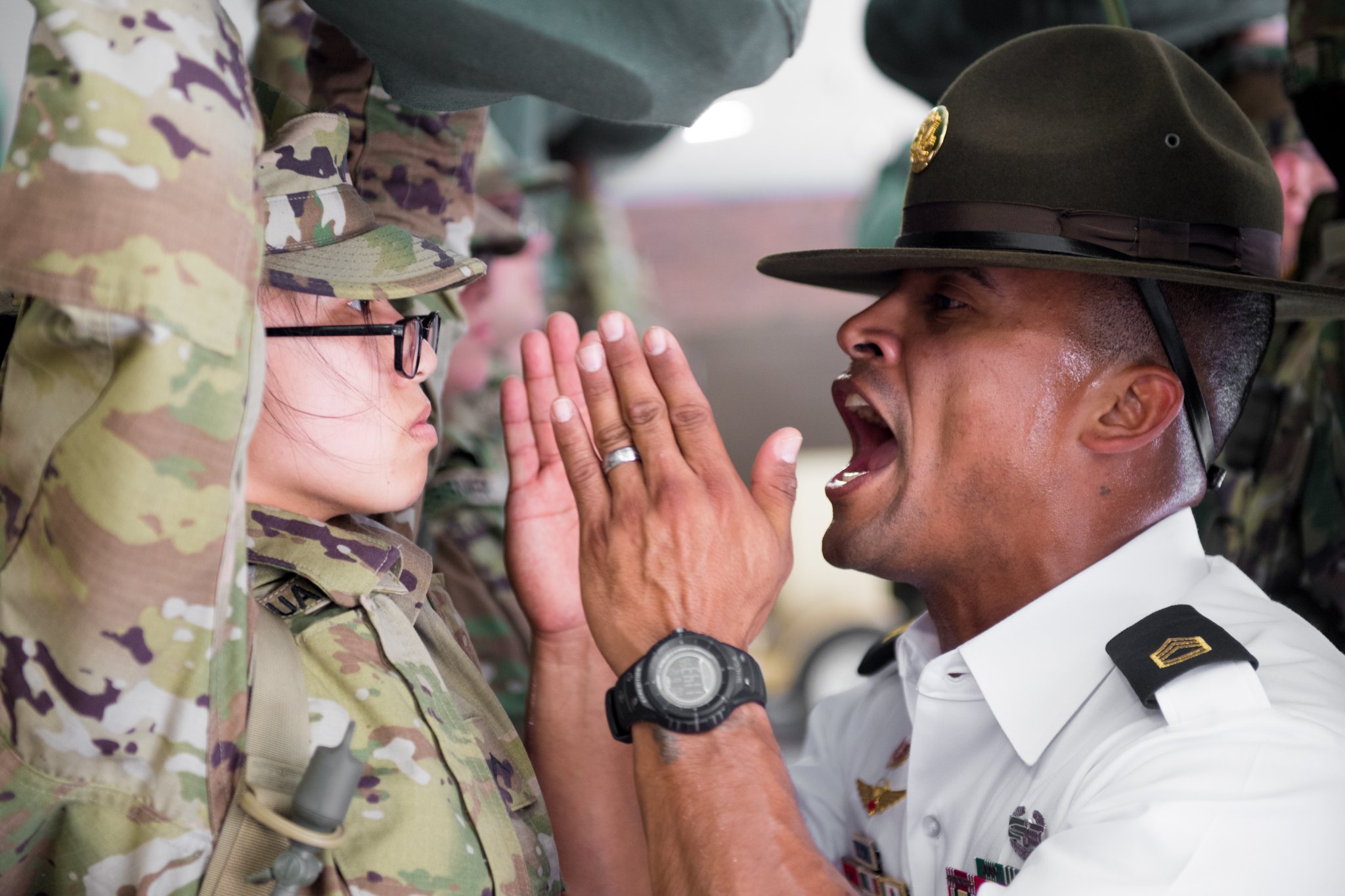

The Army is expanding the number of recruiting companies at its boot camps to increase throughput of potential soldiers. The service hopes they are hitting a turning point in the service’s recruitment efforts.
U.S. Army Training and Doctrine Command officials said they plan to stand up four new basic training companies: two at Fort Leonard Wood, Missouri and two at Fort Sill, Oklahoma.
The new basic training combat companies will accommodate up to 3,840 more trainees each year. The sites will begin training recruits in October and bring the Army’s total basic combat training companies up to 79.
The new units were announced months after Army officials told Congress that the new modernization and recruiting strategy overhaul showed encouraging signs — though exactly how encouraging is unclear. The Army has missed its recruit goals in recent years but Secretary Christine Wormuth told lawmakers that the service would hit its new, lower goal of 55,000 new soldiers. Of those, she said, 5,000 are coming from the delayed entry program. In previous years the Army missed its goals of 60,000 and 65,000 annual recruits.
Marek Posard, a military sociologist who previously studied personnel for the RAND Corporation, said that adding companies are a positive sign that recruiting is on the up for the Army. Posard said it shows the payoff of the service’s recent modernization efforts to its recruiting strategy which he also called “pretty impressive for a large bureaucracy like the Army.”
In October, Wormuth announced sweeping changes to the Army’s recruiting enterprise that included new recruiting military occupational specialties and consolidating the service’s marketing and recruiting under a three-star command to report directly to her office.
“This is not like working at Costco and that’s no offense to Costco. It’s a very unique type of employer that uses the tools of organized violence against others on behalf of our country,” Posard said. “It takes a professional, highly trained soldier to do that and I think it’s important that these types of efforts, that are very creative efforts by the Army, to find those who can meet those standards and meet the threats that are facing our country that are growing in number and diversity.”
The Army has also increased its investment into the Army Future Soldier Preparatory Course which helps recruits who do not meet initial recruit standards get up to par for basic training. The course is designed to help people who did want to enlist but did not meet academic or physical requirements to join the service. Students can train to meet body fat standards for the Army, or study to pass the Armed Services Vocational Aptitude Battery (ASVAB) test.
Posard said the course is a creative way to build the force by helping potential soldiers meet requirements of a professional fighting force without lowering standards to get them there.
Subscribe to Task & Purpose today. Get the latest military news and culture in your inbox daily.
“The Army can build them or you can buy them – incentives or you find where there is an opportunity to build leadership. I think things like the future soldier prep course is an example where you can build leadership that meets the high standards of the Army,” Posard said.
Earlier this week, the Army’s new enlisted recruiter 42T MOS signed contracts to train with companies like Amazon and Deloitte to learn ‘best practices’ from the private sector’s recruiting methods. The Army chose 25 soldiers who were previously recruiters to begin their new MOS training.
Last month, the Army’s first class of new warrant officers graduated from training. The 420T warrant officer positions will handle the Army’s behind-the-scenes data analysis which goes into the service’s recruiting formula.
Basic training companies can train a maximum of 240 recruits per cycle which happens four times a year, meaning the maximum number a company can handle is 960.
Roughly 117,000 recruits go through basic combat training each year with around 91.6% making it through initial training and their first unit assignment, according to TRADOC. For the ones that make it through the ten-week slog, they will go on to their Advanced Individual Training Schools or in a few cases return to their national Guard or Reserve units.
The latest on Task & Purpose
- Top U.S. special ops units held a major exercise off Alaska, 45 miles from Russia
- An Army officer is one of the stars of the U.S. women’s Olympic rugby team
- Army marksmanship instructor wins Olympic medal in rifle event
- Inside the recovery of MIA Americans from a secret jungle base
- Pentagon orders review of Medals of Honor given for Wounded Knee Massacre
